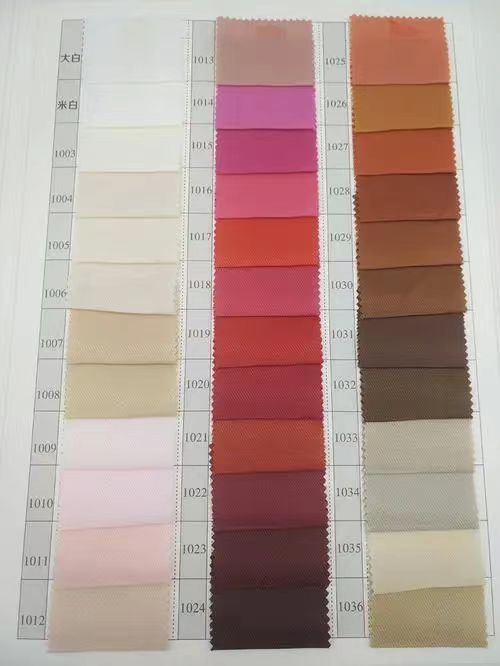What are the compositions and specifications of polyester oxford fabric?
There are mainly two categories of oxford fabric: polyester and nylon. Today, I will share information about polyester oxford fabric. Polyester oxford fabric has clear color spots, is lightweight, waterproof, flexible, anti-static, tear-resistant, and even fire-resistant.
Polyester is divided into filament and spun yarn. Spun yarn is further categorized into high, medium, and low elasticity, with low elasticity appearing curly and high elasticity being straight.
Characteristics of Polyester Filament:
Strength: Polyester fiber is nearly 1 time stronger than cotton and 3 times stronger than wool, making polyester fabrics robust and durable.
Heat Resistance: Polyester can be used between temperatures of -70°C to 170°C, showcasing excellent heat resistance and stability among synthetic fibers.
Elasticity: Polyester's elasticity is close to that of wool, with superior wrinkle resistance compared to other fibers, leading to good shape retention.
Abrasion Resistance: Polyester's abrasion resistance is second only to nylon among synthetic fibers.
Water Absorption: Polyester has low water absorption and good insulation properties. However, due to its low water absorption, it generates static electricity during friction and has poor natural dye adsorption. Hence, high-temperature and high-pressure dyeing methods are commonly used for polyester dyeing.
Spun yarn can be classified as high, medium, or low elasticity. High elasticity refers to yarn with high elongation, while low elasticity indicates low elongation. Materials with high elasticity are usually nylon or polypropylene, while low elasticity materials are typically polyester or nylon. The specific difference between high and low elasticity lies in the more pronounced fluffiness and curvature of the yarn in high elasticity types, and a noticeable sense of elasticity when pulled.
People often wonder about the specifications of oxford fabric, usually represented by "D," such as 1800D, 1680D, 1200D, 900D, 600D, 420D, 300D, 210D, and 150D oxford fabric. The larger the number preceding the "D," the thicker, more abrasion-resistant, and durable the fabric is.
When oxford fabric is in its raw state, it lacks specific characteristics and applications. It's through strong post-processing techniques that oxford fabric transforms, gaining attributes like waterproofing, fire resistance, anti-static properties, UV protection, mold resistance, high-temperature resistance, and corrosion resistance. All of these qualities must undergo professional testing to be verified.
Applications of Polyester Oxford Fabric:
Outdoor Series: Beach chairs, tents, awnings, canopies, portable tents, camping equipment, gazebos, etc.
Luggage Series: Suitcases with wheels, backpacks, laptop bags, business bags, shoulder bags, tool bags, cosmetic bags, handbags, etc.
Baby Carriage Series: Baby strollers, carriers, waist seats, baby seats, etc.
Home Series: Wardrobes, storage boxes, suit bags, aprons, etc.
Shoe Material Fabric, Rehabilitation Equipment Fabric, and Special Fabrics: Fire-resistant polyester oxford fabric is used in areas like sunshades for buses, train seats, covers, ships, aviation, and more.






Leave Your Message